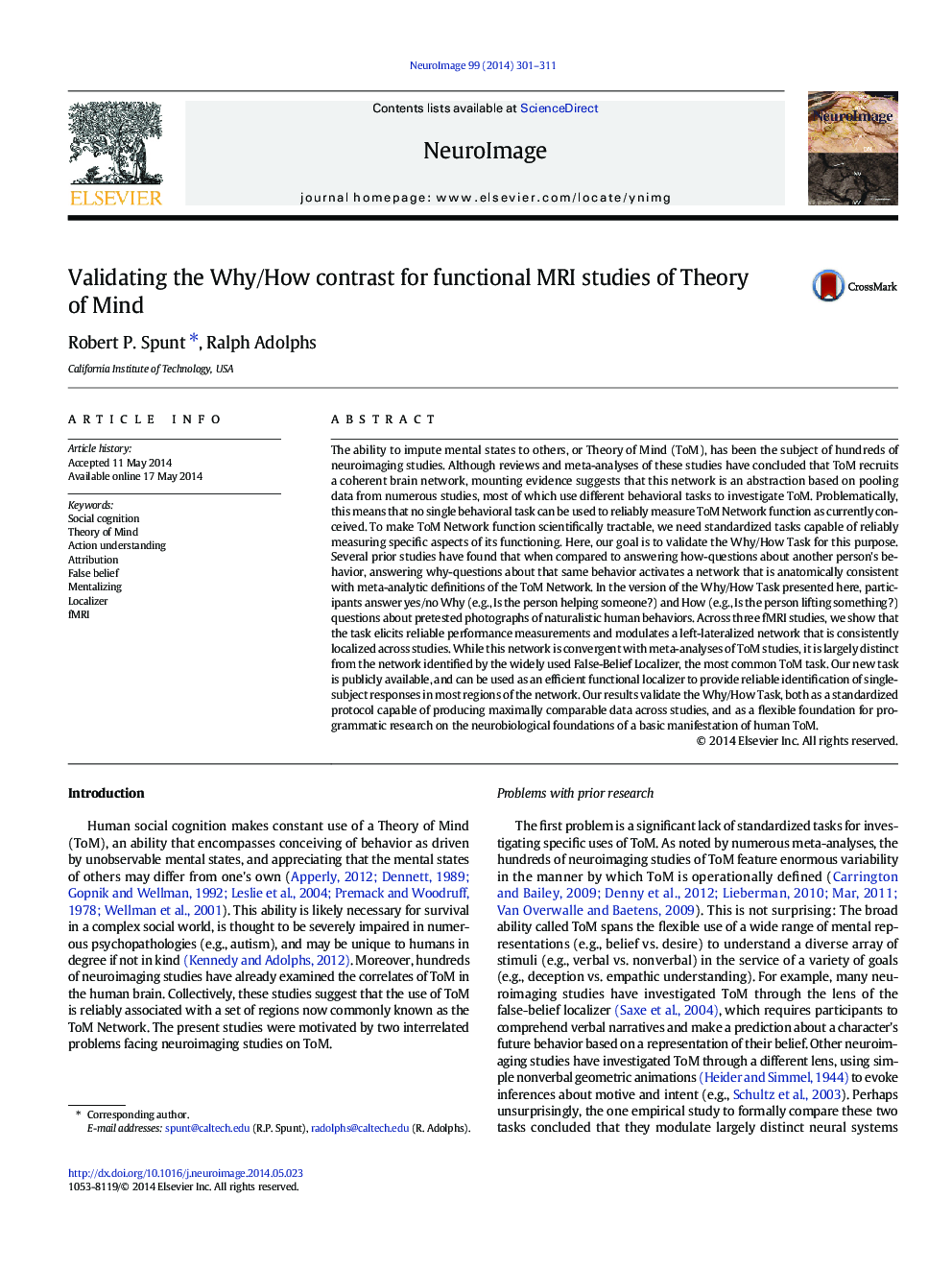| Article ID | Journal | Published Year | Pages | File Type |
|---|---|---|---|---|
| 6027098 | NeuroImage | 2014 | 11 Pages |
•We empirically validate the Why/How task for fMRI studies of Theory of Mind (ToM).•The task produces reliable measures of behavior and regional brain activity.•The brain activity observed is distinct from that seen in the False-Belief Localizer.•The brain activity observed converges with meta-analyses of ToM.•A standardized version of the task is made publicly available as a functional localizer.
The ability to impute mental states to others, or Theory of Mind (ToM), has been the subject of hundreds of neuroimaging studies. Although reviews and meta-analyses of these studies have concluded that ToM recruits a coherent brain network, mounting evidence suggests that this network is an abstraction based on pooling data from numerous studies, most of which use different behavioral tasks to investigate ToM. Problematically, this means that no single behavioral task can be used to reliably measure ToM Network function as currently conceived. To make ToM Network function scientifically tractable, we need standardized tasks capable of reliably measuring specific aspects of its functioning. Here, our goal is to validate the Why/How Task for this purpose. Several prior studies have found that when compared to answering how-questions about another person's behavior, answering why-questions about that same behavior activates a network that is anatomically consistent with meta-analytic definitions of the ToM Network. In the version of the Why/How Task presented here, participants answer yes/no Why (e.g., Is the person helping someone?) and How (e.g., Is the person lifting something?) questions about pretested photographs of naturalistic human behaviors. Across three fMRI studies, we show that the task elicits reliable performance measurements and modulates a left-lateralized network that is consistently localized across studies. While this network is convergent with meta-analyses of ToM studies, it is largely distinct from the network identified by the widely used False-Belief Localizer, the most common ToM task. Our new task is publicly available, and can be used as an efficient functional localizer to provide reliable identification of single-subject responses in most regions of the network. Our results validate the Why/How Task, both as a standardized protocol capable of producing maximally comparable data across studies, and as a flexible foundation for programmatic research on the neurobiological foundations of a basic manifestation of human ToM.
